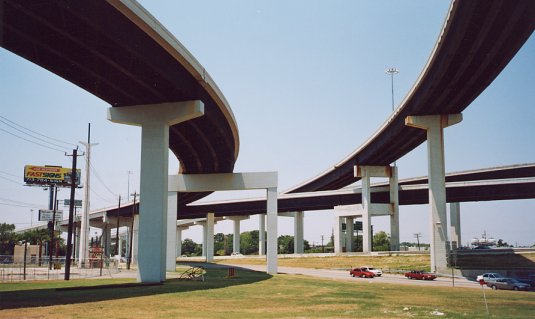

2019-12-02 02:26:19

As the name suggests, Structural Lightweight Concrete is really light in weight when compared to the traditional concrete mix because it is made from coarse aggregate or entire fine aggregate instead of normal aggregates.
Structural lightweight concrete used lightweight aggregates which are usually made from expanded shale, clay or slate materials that have been heated in a rotary kiln to develop a porous structure.
Classification of lightweight concrete
One can easily classify the various types of lightweight concrete as per the methods of production.
These are:
By using a porous lightweight aggregate of low specific gravity, lower than 2.6. This is known as lightweight aggregate concrete.
By introducing large gaps within the concrete. These gaps should be distinguished from extremely fine gaps produced by air-entraining. Such type of concrete is called aerated, cellular, or foamed type.
By omitting the fine aggregate from the mix so that large numbers of gaps are present; normal weight coarse aggregate is used. Such type of concrete as no-fines concrete.
Apart from the method of production, it can also be classified according to the purpose for which Hydroponic Clay Balls are used. This can distinguish between structural lightweight concrete, concrete used in masonry units, and insulating concrete.
Lightweight aggregate concrete
The first use of lightweight concrete blocks was mentioned during the 1950s. After that, the development and production of new types of LWA (lightweight aggregate) made it possible to introduce LWC of high strength which is suitable for structural work.
Today, LWA concrete is used in the construction of building to reduce the weight of the structure as it was an important consideration for design as well as for the economy.
Have a look at these different types of lightweight aggregates that is suitable for structural reinforced concrete:
Pumice
It is used for reinforced concrete roof slab, mainly for industrial roofs.
Foamed slag
Foamed slag was the first lightweight aggregate that was suitable for reinforced concrete produced in large quantity.
Expanded clay and shale
This type is aggregate is capable of achieving sufficiently high strength for prestressed concrete.
Aerated Concrete
The concrete which has the lowest density, thermal conductivity, and strength is the aerated concrete. Just like timber, you can see it, screw it, and nail it but this concrete is non-combustible. Aerated concrete is made by mixing stabilized foam or by whipping air in with the help of an air-entraining agent.
While the precast products are usually made by adding 0.2 percent aluminum powder to the mix which reacts with alkaline substances in the binder to form hydrogen bubbles.
Aerated concrete is usually used where little strength is required such as roof screeds and pipe lagging. Also, the full strength development of aerated concrete depends upon the reaction of lime with the siliceous aggregates, while for equal densities the strength of high-pressure steam cured concrete is about twice of air-cured but the shrinkage is only one-third or less.
Aerated concrete is generally light in weight because it contains cellular materials consisting of cement or lime and sand or other siliceous material. It is made by a physical or a chemical process during which either air or gas is introduced into a slurry which doesn’t contain any coarse material.
Low-density concrete
Low-density concrete is generally used for insulation purpose only where high insulation values are needed.
Moderate density concrete
Moderate density concrete has some bit of compressive strength and that is the reason why it falls between structural and low-density concrete. This concrete is sometimes designed as ‘fill’ concrete as the insulation values are intermediate.
Structural Lightweight concrete
Structural lightweight concrete offers full structural efficiency which is generally made with expanded shale, clay, slates, slag, and fly-ash.
As mentioned in the above article that lightweight concrete is made from the coarse or fine aggregate. Apart from that aggregates are also utilized in creating hydroton clay pebbles which can be used as Hydroponic Grow Medium for the plants.
Leave a Comment
Your comments added successfully.Thank You!